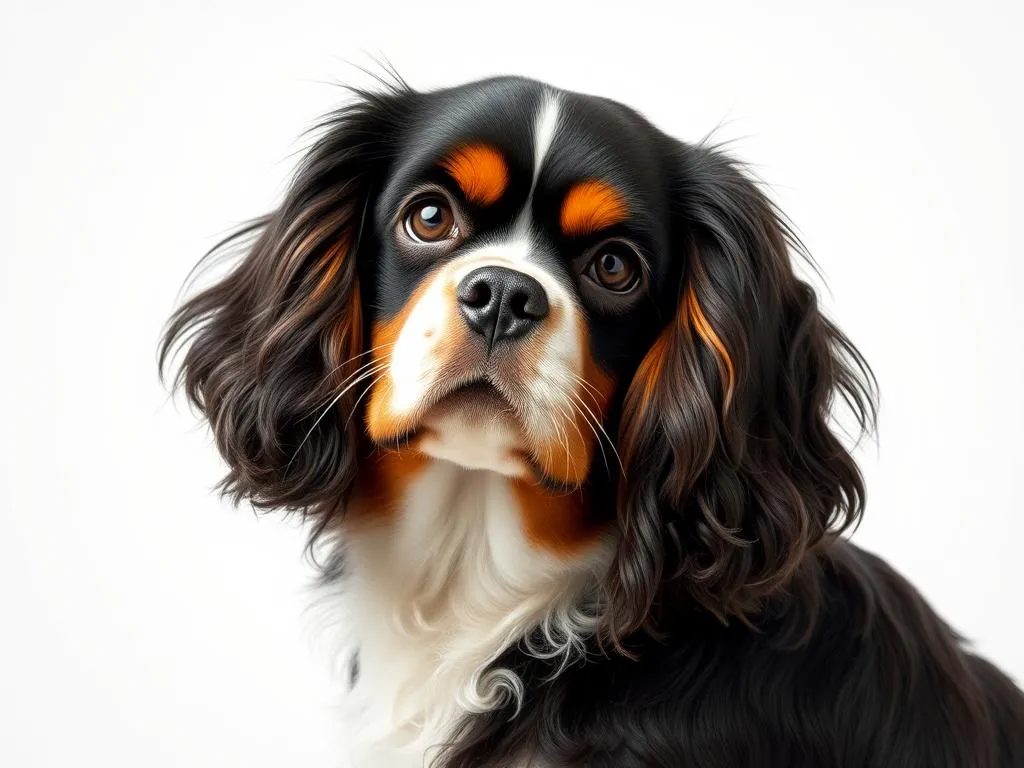
Introduction
The Cavalier King Charles Spaniel is a beloved companion breed known for its affectionate nature and elegant appearance. Originating from the United Kingdom, this breed has a rich history intertwined with royalty, making it a sought-after pet for many. The importance of coat colors in this breed goes beyond aesthetics; colors can influence breed standards, popularity, and buyer preferences. In this article, we will explore the various Cavalier King Charles Spaniel colors and patterns, providing insights into their significance and implications for potential owners.
Understanding Cavalier King Charles Spaniels
Breed Characteristics
Cavalier King Charles Spaniels are small dogs, typically weighing between 13 to 18 pounds and standing about 12 to 13 inches tall at the shoulder. They have a silky, medium-length coat that requires regular grooming. One of the most appealing traits of this breed is its friendly and gentle temperament. Cavaliers are known for their affectionate nature, making them great family pets. They are also intelligent and eager to please, which makes training enjoyable.
Historical Background
The breed’s origins date back to the 16th century, where they were cherished by English royalty. The Cavalier King Charles Spaniel is named after King Charles II, who was famously fond of the breed. Over time, various color preferences emerged, influenced by the tastes of the aristocracy. The evolution of these preferences has led to the rich variety of colors we see today, making the Cavalier King Charles Spaniel a unique and fascinating breed.
Official Color Variations
Recognized Colors
The Cavalier King Charles Spaniel comes in several recognized colors, each with its distinct characteristics and historical context.
Blenheim (Chestnut & White)
The Blenheim color pattern features rich chestnut markings on a white background. This combination is one of the most popular and iconic among Cavalier owners. Historically, the Blenheim color was favored by royals and has remained a classic choice for this breed.
Tricolor (Black, White & Tan)
The tricolor pattern showcases a striking combination of black, white, and tan. The black and white colors create a beautiful contrast, while the tan markings add a unique charm. This coloration is particularly appealing to those who love bold and vibrant patterns.
Ruby (Solid Red)
The ruby color is a solid, rich red that exudes warmth and elegance. While less common than the other colors, ruby Cavaliers have a dedicated following. Their rarity often makes them more desirable among collectors and enthusiasts.
Black & Tan
The black & tan color features a sleek black coat with distinctive tan markings. This color combination gives Cavaliers a sophisticated look. However, some misconceptions exist around this color, particularly regarding temperament and health, which we will address later in the article.
Rare and Uncommon Colors
While the recognized colors are popular, there are also rare and uncommon colors that some breeders may offer.
Blue (Gray)
The blue color, often described as gray, is quite rare in Cavaliers. This color can occur due to a specific dilution gene, making it a sought-after choice for some. However, potential buyers should be aware of the breeding implications, as this color may be associated with certain genetic health issues.
Brindle
The brindle pattern features a mix of darker and lighter stripes and is controversial in Cavalier breeding. While some breeders embrace this pattern, it is not widely accepted in show rings. This controversy stems from concerns about genetic integrity and health issues associated with such colors.
Patterns in Cavalier King Charles Spaniels
Solid vs. Particolor
Cavalier King Charles Spaniels can have solid colors or particolor patterns. Solid colors feature a uniform hue throughout the coat, while particolor patterns involve a combination of two or more colors. Visual examples can help illustrate the differences, with solid colors often appearing more striking and particolor patterns showcasing a more intricate design.
Markings and Their Significance
Specific markings on a Cavalier’s face, chest, and legs can hold significance in showing and breeding standards. For example, a prominent white mark on the forehead, known as a “blaze,” may enhance the breed’s appearance and is often favored in competitions. Understanding these markings can help prospective owners appreciate the nuances of the breed’s beauty.
Choosing the Right Color for You
Popularity Trends
Current trends in Cavalier King Charles Spaniel colors indicate a growing preference for Blenheim and tricolor variations. Factors influencing these preferences include personal aesthetics, breed history, and the visibility of colors in various environments. While some owners may prefer the classic colors, others might gravitate towards the rare hues, like ruby or blue, due to their uniqueness.
Considerations Beyond Color
When choosing a Cavalier King Charles Spaniel, it’s crucial to consider factors beyond color. Temperament and health should be prioritized over aesthetics. Each color may have implications for visibility—darker colors might be more challenging to see in low light, while lighter colors may require more grooming to maintain their appearance. Prospective owners should also consider how the dog’s coat color may affect grooming needs, as lighter coats often show dirt more readily.
Health Considerations Related to Color
Genetic Health Issues
Certain Cavalier King Charles Spaniel colors can be linked to specific genetic health issues. For example, some studies suggest that the tricolor and blue colors may carry a higher risk for certain conditions, such as hip dysplasia or heart problems. Understanding these genetic predispositions can help potential owners make informed decisions.
Responsible Breeding Practices
Ethical breeding practices are essential to ensure the health and temperament of Cavalier King Charles Spaniels. Responsible breeders prioritize health over color, ensuring that their breeding choices do not compromise the breed’s integrity. Buyers should be wary of breeders who focus solely on producing specific colors without considering health implications.
Conclusion
Understanding Cavalier King Charles Spaniel colors is important for potential owners. Each color carries its significance, influencing personal preferences and breeding practices. It’s essential to remember that while color can be appealing, the overall health and temperament of the dog should remain the top priority. By focusing on these aspects, prospective owners can make informed decisions and find a Cavalier King Charles Spaniel that fits their lifestyle.
FAQs
Are certain colors more prone to health issues?
Yes, some colors, such as tricolor and blue, may be linked to specific genetic health issues. It’s crucial to research and choose a reputable breeder who prioritizes health.
How can I find a reputable breeder?
Look for breeders who are members of recognized breed clubs, conduct health testing, and provide a transparent breeding history. Visit the breeder to see the living conditions of the puppies and their parents.
What should I expect in terms of grooming for different colors?
Lighter colors may require more frequent grooming to keep them clean and free of stains, while darker colors might need less grooming but require attention to prevent matting. Regular brushing is essential for all colors to maintain a healthy coat.









